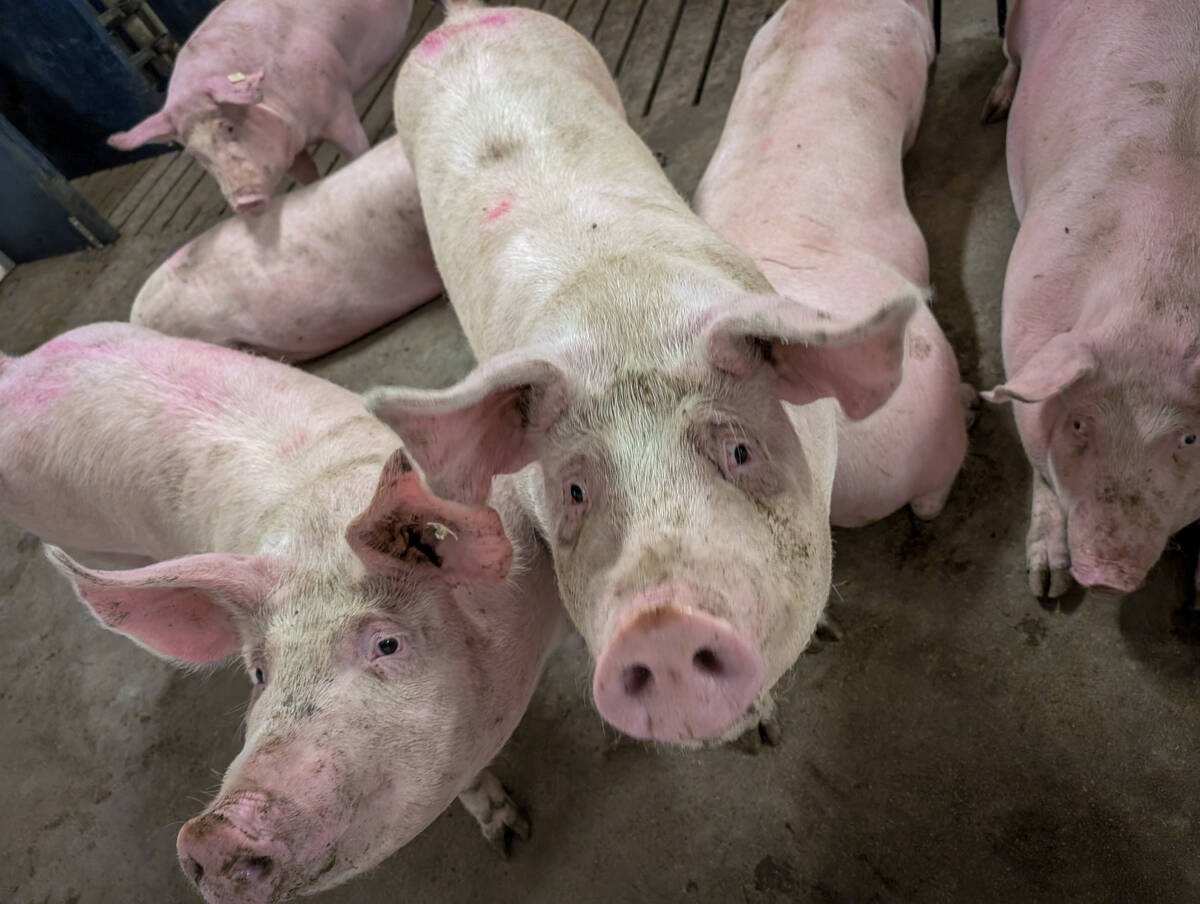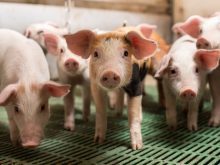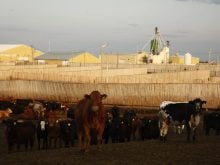REGINA – Blair and Steph McIntosh slapped down the alarm clock at 2:30 a.m. and hit the show barns by 3 a.m. to prepare their Simmental herd for the Canadian Western Agribition show in Regina.
“We do that every year and we like to give them enough time to get washed, eat and lie down and relax before the show,” said Steph.
The young couple from Maymont, Sask., won junior champion female, which was sold at the Agribition sale on Nov. 24 for $20,000.
The bred female went to ML &L Simmentals of Ontario. It was the highlight of their career since they started with the breed in 2001.
Read Also

Pork sector targets sustainability
Manitoba Pork has a new guiding document, entitled Building a Sustainable Future, outlining its sustainability goals for the years to come.
“You wait and see and you are very nervous,” said Steph.
“You always hope, and you think maybe it will be that high.”
They started coming to the Regina show in 2005 and have steadily improved their performance, showing solid black and red Simmental.
The couple met at Agribition in 1999. Steph came from a Charolais family while Blair was from Ontario, where his family had Simmental.
The McIntoshes are among the new generation of breeders. They have two pre-schoolers and farm full time with her parents, Audrey and Richard Seib. They own 40 purebred Simmentals and 100 commercial cows. They joined a private bull sale with another breeder this year and are watching commercial demand increase for replacement bulls.
“A lot of people are looking for a black baldie,” she said.
“They seem to like the black calves, but if they can get a bald face, it shows the Simmental influence.”
The Canadian Simmental Association has recently received about $3 million in grant money to pursue genetic research profiling a number of traits.
The McIntoshes have started using Igenity tests from Merial on their purebreds, looking for cattle that are homozygous polled.
“With the homo polled, no matter what they are bred to, all the calves will be polled,” she said.
Animal welfare laws in some European countries demand horns are removed with anesthetic. As a result, some producers find it easier to breed that quality out of them.
Carcass merit could follow, although they are still building their herd and want more numbers to compare results across their bulls and females. Simmental is likely to remain the breed of choice.
“We are still feeling challenged with the Simmentals. We are doing good but we think we can do better,” she said.
Simmental sale results
•Rancier Farms of Killam, Alta., sold a January 2011 female named RF Sheeza Hussy Too 103Y for $20,000.
•A bred heifer from Wayne and Linda Libke, owners of Sunny Valley Simmentals at Hanley, Sask., sold for $15,000 to Boundary Ranch of Robsart, Sask.
•The LaFrentz family won grand champion female and grand champion bull. Reserve female went to Southpaw Cattle Co. of Carstairs, Alta., and reserve bull came from Lewis Farms of Spruce Grove, Alta.
•Sale average on the 20 live females was $8,100 and $5,700 on two embryo lots. A semen lot offering 10 doses from the sire of Sheeza Hussy sold for $1,000 per dose.














